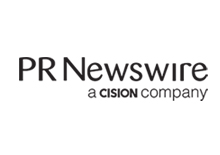Industrial Automation Market In Life Sciences Industry size is set to grow by USD 5.06 bn from 2024-2028, growing global demand for healthcare services to boost the market growth, Technavio
NEW YORK, May 18, 2024 /PRNewswire/ -- The global industrial automation market in life sciences industry size is estimated to grow by USD 5.06 bn from 2024-2028, according to Technavio. The market is estimated to grow at a CAGR of 11.4% during the forecast period.
For more insights on the forecast market size and historic data (2018 - 2022) - Download Free sample report in a minutes
Forecast period
2024-2028
Base Year 2023
Historic Data
2018 - 2022
Segment Covered Deployment (Onsite and Decentralised), Product (DCS, SCADA, PLC, and MES), and Geography (North America, Europe, APAC, South
America, and Middle East and Africa)
Region Covered
North America, Europe, APAC, South America, and Middle East and Africa
Key companies profiled ABB Ltd., Applied Materials Inc., Aspen Technology Inc., Azbil Corp., Balluff GmbH, Danaher Corp., Dassault Systemes SE,
Emerson Electric Co., Endress Hauser Group Services AG, Honeywell International Inc., Johnson Controls International Plc,
Mitsubishi Electric Corp., OMRON Corp., Parker Hannifin Corp., Rockwell Automation Inc., SAP SE, Schneider Electric SE,
Siemens AG, Yokogawa Electric Corp., and Festo SE and Co. KG
Segment Overview
This industrial automation market in life sciences industry report extensively covers market segmentation by
1. Deployment
-- 1.1 Onsite
-- 1.2 Decentralised
2. Product
-- 2.1 DCS
-- 2.2 SCADA
-- 2.3 PLC
-- 2.4 MES
3. Geography
-- 3.1 North America
-- 3.2 Europe
-- 3.3 APAC
-- 3.4 South America
-- 3.5 Middle East and Africa
1.1 Onsite- In the industrial automation market within the life sciences industry, deployment segmentation reveals that onsite deployment holds the largest market share. This preference is primarily due to the enhanced security features offered by onsite deployment. In contrast to cloud-based deployment, onsite models utilize dedicated servers for data storage, providing greater control and security. Human-machine interfaces, sensors such as photoelectric, laser, inductive, and temperature, Programmable Logic Controllers, servos, lasers markers, safety light curtains, robots, and various motor types including AC and DC, are integral components in both deployment models. Discrete automation and process automation applications in the industrial sector, including robotics, automation, manufacturing, material handling, and networking architectures, benefit from these advanced technologies. The integration of cloud, mobility, Internet of Things, and factory automation in the automation sector further enhances the capabilities of these systems. Cloud computing platforms, semiconductors, electronic devices, automotive, aerospace, heavy engineering, machine learning, and healthcare are among the verticals that leverage these automation solutions.
3.1 North America- The life sciences industry in North America is experiencing a significant shift towards industrial automation, driven by the increasing demand for premium healthcare services catering to an aging population. This turbocharges the industrial sector with advanced technologies such as Programmable Logic Controllers (PLCs), 5G wireless technology, digital twin, digitalization, industrial IoT, and virtual capabilities. Cloud engineering and Software-as-a-service (SaaS) enable virtual reality and edge computing, while artificial intelligence and advanced analytics enhance the human-machine interface. Sensors, including photoelectric, laser, inductive, and safety light curtain, integrate with servo and AC/DC motors, lasers markers, and robots to streamline manufacturing and material handling processes. Networking architectures, cloud, mobility, and the Internet of Things (IoT) facilitate factory automation, with cloud computing platforms and semiconductors powering electronic devices in the automotive and aerospace industries. These technological advancements are transforming the automation sector, enabling greater convenience, patient experience, and improved quality of care.
For more information on market segmentation with geographical analysis including forecast (2024-2028) and historic data (2018 - 2022) - Download a Sample Report
Key Market Trends Fueling Growth
The industrial automation market in the life sciences sector is experiencing significant growth, with open process automation (OPA) gaining increasing attention. The Open Process Automation Forum is driving industry efforts to address interoperability issues. In 2021, ExxonMobil collaborated with Yokogawa Electric Corp. To establish an OPA testbed, integrating technologies such as robotics, automation, networking architectures, cloud, mobility, IoT, AI, and machine learning for evaluating industrial standards. This collaboration supports the pharmaceutical sector and other manufacturing verticals, including automotive, aerospace, and heavy engineering.
Market Challenges
-- The life sciences industry encounters significant challenges in
implementing industrial automation due to infrastructure and integration
issues. High-speed Internet is essential for cloud-based automation, yet
connectivity problems, power outages, and slow networks can cause system
downtimes, affecting productivity. Developing countries and
SMEs/startups are particularly affected. In heterogeneous healthcare or
pharmaceutical environments, using various proprietary tools and
systems, integration issues can arise. Key technologies like IoT, AI,
5G, digital twin, edge computing, and advanced analytics can help
mitigate these challenges, enabling digital transformation and enhancing
industrial efficiency.
Research report provides comprehensive data on impact of trend, driver and challenges - Buy Report
Research Analysis
The Industrial Automation Market in the Life Sciences Industry is experiencing significant growth due to the integration of advanced technologies such as IoT, AI, and Augmented Reality. Semiconductor chips play a crucial role in powering Cyber-physical systems, including Industrial I/O, Motion Control, and Programmable Logic Controllers. Industry 4.0 and IIoT are driving the adoption of wireless sensors and Industrial Web Panels, enabling real-time monitoring and control in manufacturing processes. Robotics and automation are transforming material handling, while networking architectures, including 5G wireless technology, ensure seamless communication between control systems. Turbocharging these advancements is the integration of Artificial Intelligence and Machine Learning algorithms, enhancing the overall efficiency and productivity of the industrial sector.
Market Research Overview
The Industrial Automation Market in the Life Sciences Industry is experiencing significant growth due to the increasing demand for efficient and accurate manufacturing processes. This sector requires advanced automation solutions to ensure product quality, regulatory compliance, and reduced time-to-market. Automation technologies such as robotics, machine vision, and sensors play a crucial role in automating various processes, including production, quality control, and logistics. Additionally, the integration of IoT and AI technologies is revolutionizing the industry by enabling predictive maintenance, real-time monitoring, and data-driven decision-making. The market is expected to continue its growth trajectory, driven by the rising adoption of automation in R&D, manufacturing, and supply chain management.
Table of Contents:
1 Executive Summary
2 Market Landscape
3 Market Sizing
4 Historic Market Size
5 Five Forces Analysis
6 Market Segmentation
-- Deployment
-- Onsite
-- Decentralised
-- Product
-- DCS
-- SCADA
-- PLC
-- MES
-- Geography
-- North America
-- Europe
-- APAC
-- South America
-- Middle East And Africa
7 Customer Landscape
8 Geographic Landscape
9 Drivers, Challenges, and Trends
10 Company Landscape
11 Company Analysis
12 Appendix
About Technavio
Technavio is a leading global technology research and advisory company. Their research and analysis focuses on emerging market trends and provides actionable insights to help businesses identify market opportunities and develop effective strategies to optimize their market positions.
With over 500 specialized analysts, Technavio's report library consists of more than 17,000 reports and counting, covering 800 technologies, spanning across 50 countries. Their client base consists of enterprises of all sizes, including more than 100 Fortune 500 companies. This growing client base relies on Technavio's comprehensive coverage, extensive research, and actionable market insights to identify opportunities in existing and potential markets and assess their competitive positions within changing market scenarios.
Contacts
Technavio Research
Jesse Maida
Media & Marketing Executive
US: +1 844 364 1100
UK: +44 203 893 3200
Email: media@technavio.com
Website: www.technavio.com/
View original content to download multimedia:https://www.prnewswire.com/news-releases/industrial-automation-market-in-life-sciences-industry-size-is-set-to-grow-by-usd-5-06-bn-from-2024-2028--growing-global-demand-for-healthcare-services-to-boost-the-market-growth-technavio-302149472.html
SOURCE Technavio



